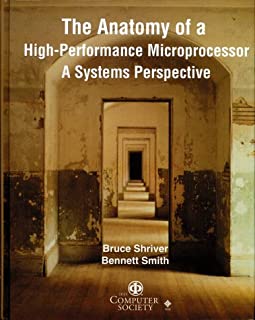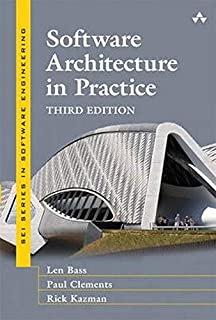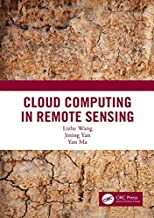The Anatomy of a High-Performance Microprocessor: A Systems Perspective
Original price was: ₹4,664.42.₹3,731.54Current price is: ₹3,731.54.
ISBN: 9780818684005
Author/Editor: Bruce Shriver
Publisher: IEEE
Year: 1998
1 in stock (can be backordered)
Description
This work describes in detail the microarchitecture of a high-performance microprocessor, giving an integrated treatment of platform and systems issues relating to the design and implementation of microprocessor-based systems. Unique in content and approach, the accompanying interactive CD-ROM provides multiple books and a wide variety of materials: complete data books, articles from journals and conference proceedings, manuscripts of important historical interest, IEEE and industry standards, VHDL and Verilog simulators, numerous video and audio clips, complete text of the book, including figures and tables. Shriver and Smith use AMD’s K6 3D microprocessor as a “case study” basis for discussions on microarchitecture issues and they use increasingly important industry specifications and standards for platforms and systems issues. This book is an important reference for individuals building systems using microprocessors and readers looking for significant insights into fundamental design guidelines that transcend the design, implementation and use of a specific microprocessor.
Practitioners, academia and technical product managers alike should benefit from this detailed overview of microprocessors, platforms and systems for years in the future.
Additional information
| Weight | 1.519 kg |
|---|
Product Properties
| Year of Publication | 1998 |
|---|---|
| Table of Contents | Preface Purpose Scope Author? Note Dare we call it fun? View less > Chapter F1: INTRODUCTION Practical Applications Why Assembly? Core Families (?aseline,??Midrange,?enhanced ?idrange? Data Sheet Walk Through Straightline Program Implementation Practice Exercise ?Walk Through Microchip Microcontroller Course Information Jargon Introduction ?italics Further Reading View less > Chapter F2: MICROCHIP 8-BIT ARCHITECTURE The Microprocessor System Clock Bus for Data and Program Hardware Interfaces Hardware Organization of Memory Address Space Memory Interface Program Data Storage Memory Circuits Input/output Interface Further Reading View less > Chapter F3: INSTRUCTION SETS Fields of an Instruction (See Table 2-1 in 6809) Instruction Set for PICmicro?Controllers General Purpose Registers Special Function Registers Addressing: Direct, Indirect, Indexed, and Relative Compare and Status Flags Calculating Relative Offsets Conditional Branches View less > Code Example Further Reading View less > Chapter F4: BEGINNING CODE 8-bit Data Transfer 8-bit Addition 8-bit Subtraction Shift left 1 bit (Multiply by two) Shift left 2 bits (Multiply by four) Clear a Memory Location Set a Memory Location to All Ones Find Larger of Two Numbers Find Smaller of Two Numbers Further Reading View less > Chapter F5: LOOPING CODE 8-bit Sum of Data 16-bit Sum of Data Maximum Value Minimum Value Check-sum of Data Number of Zero, Positive, and Negative Numbers Count ??Bits Further Reading View less > Chapter F6: EMBEDDED CONTROL FUNDAMENTALS Electrical Wiring Diagrams (how to read diagrams) Breadboards (how to use standard breadboards) Basic GPIO I/O Specialized I/O Timer Modules and Registers Comparator Module Paging Consideration Evaluation Boards Further Reading View less > Chapter F7: FUNDAMENTALS of GOOD PRACTICE Program Development Structured Programming Concept of Design Patterns and Interfaces Pseudocode Using Include files to Create Reusable Code View less > Program Design and Documentation Programming Flow Charts Warnier-Orr Diagrams View less > Systems Development State Machine Diagrams SYSML Systems Definition Language Further Reading View less > Chapter F8: PROGRAMMING DATA STRUCTURES Assembly Language Concepts Arrays: String Handling and Character Operations Pointer Constructs Procedures Functions View less > Assembly Language Basics Simple Instructions Config Word Flags Subroutines Indexing View less > Assembly Language Advanced Interrupts Jump tables Stack processing Using DEFINE Creating MACROS Further Reading View less > Chapter F9: BOOLEAN LOGIC and NUMBERING SYSTEMS Logical Operators Sets and Truth Tables AND OR Exclusive OR Mask Off Most Significant 4 bits Mask Off Least Significant 4 bits Conditional functions (>,=, Mathematical Numbering Systems Binary, Hex and Decimal (with a mention of the existence of octal) Multi-byte Integer Types Signed Integers ?cover 2s compliment extensively, but mention 1s compliment and sign-magnitude, because these still come out of some sensors and FPGAs. Unsigned Integers Floating Point (I doubt many people will want to use it in a PIC, but they may be given it and need to deal with it.) BCD as a Type Further Reading View less > Chapter F10: MATHEMATICAL OPERATIONS Arithmetic Operations on Bytes Arithmetic Operations on Multi-byte Numbers (Using carry properly, detecting overflow, how to treat signed and unsigned differently) 16-bit Data Transfer 16-bit Addition 16-bit Ones Complement 16-bit Twos Complement View less > Advanced Mathematical Operations Shifting and Rotating, and How to Use Instructions in a Multi-Byte Shift Application Notes Review: View less > Multiplication Algorithms, Both Signed and Unsigned Division Algorithms Floating Point View less > Further Reading |
| Author | Bruce Shriver |
| ISBN/ISSN | 9780818684005 |
| Binding | Hardback |
| Edition | 1 |
| Publisher | IEEE |
You must be logged in to post a review.






Reviews
There are no reviews yet.